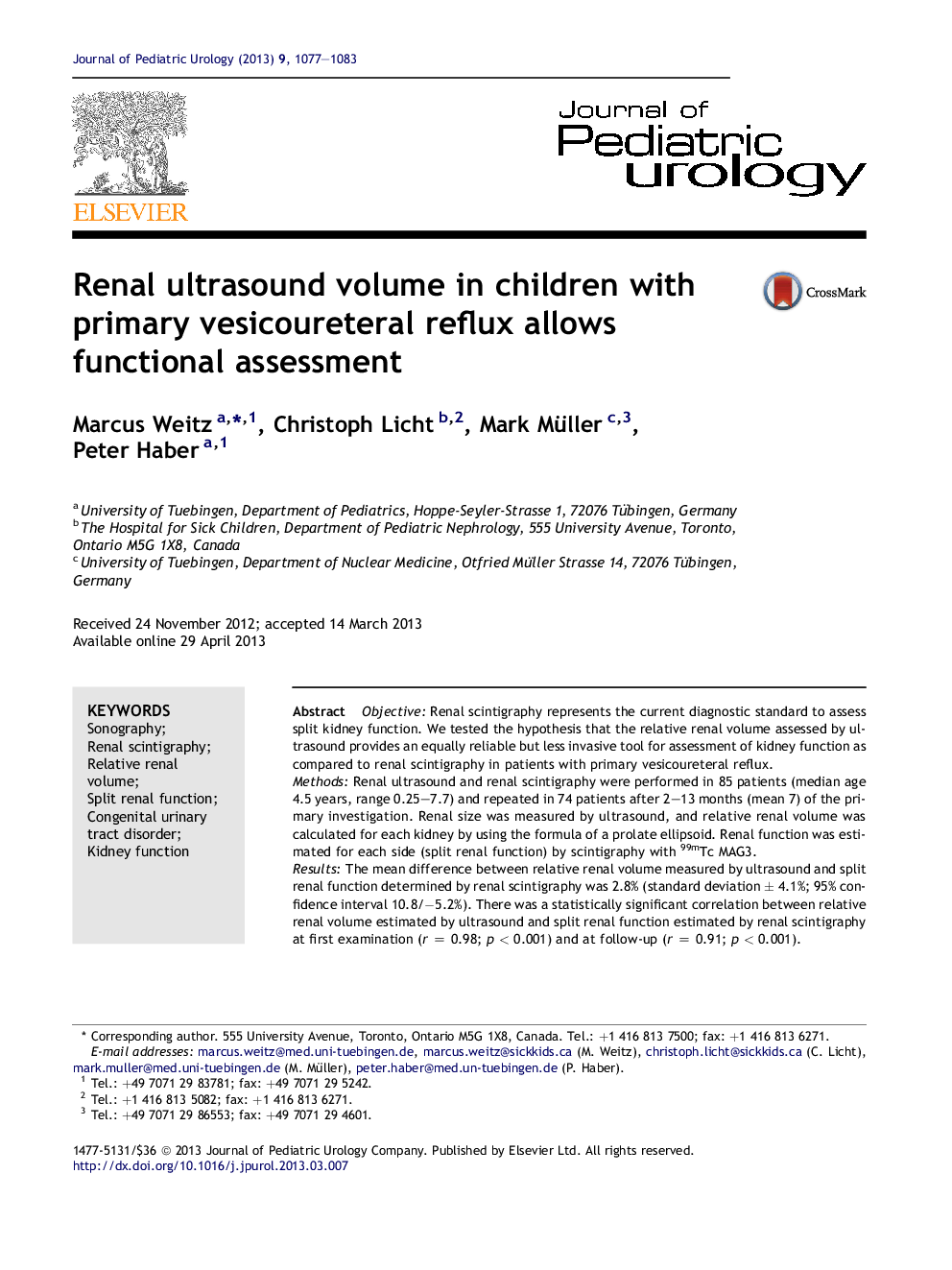| Article ID | Journal | Published Year | Pages | File Type |
|---|---|---|---|---|
| 4162406 | Journal of Pediatric Urology | 2013 | 7 Pages |
ObjectiveRenal scintigraphy represents the current diagnostic standard to assess split kidney function. We tested the hypothesis that the relative renal volume assessed by ultrasound provides an equally reliable but less invasive tool for assessment of kidney function as compared to renal scintigraphy in patients with primary vesicoureteral reflux.MethodsRenal ultrasound and renal scintigraphy were performed in 85 patients (median age 4.5 years, range 0.25–7.7) and repeated in 74 patients after 2–13 months (mean 7) of the primary investigation. Renal size was measured by ultrasound, and relative renal volume was calculated for each kidney by using the formula of a prolate ellipsoid. Renal function was estimated for each side (split renal function) by scintigraphy with 99mTc MAG3.ResultsThe mean difference between relative renal volume measured by ultrasound and split renal function determined by renal scintigraphy was 2.8% (standard deviation ± 4.1%; 95% confidence interval 10.8/−5.2%). There was a statistically significant correlation between relative renal volume estimated by ultrasound and split renal function estimated by renal scintigraphy at first examination (r = 0.98; p < 0.001) and at follow-up (r = 0.91; p < 0.001).ConclusionWe conclude that ultrasound measurement of relative renal volume is capable of assessing split renal function in children with primary vesicoureteral reflux and, thus, should be considered instead of the more invasive MAG3 scintigraphy.
